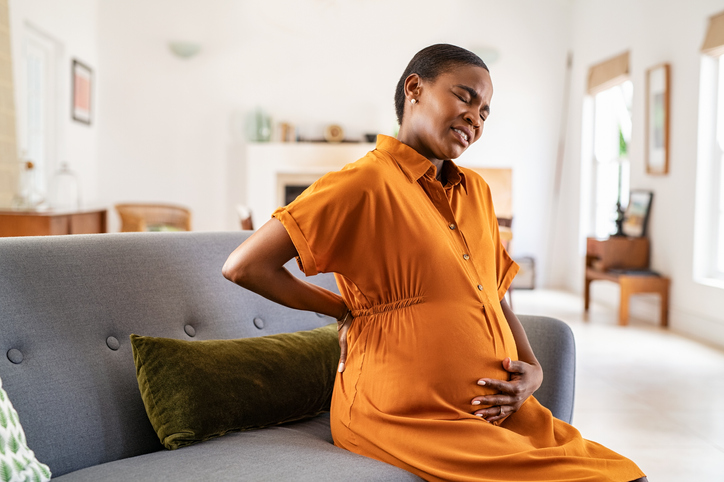Show content
Pregnancy can be an incredibly exciting and fulfilling experience, but it can also bring on aches and pains that can leave you feeling uncomfortable and frustrated. Most expecting mothers suffer from back pain throughout their pregnancy and can sometimes find it difficult to find ways to ease it. In this post, we’ll discuss the causes of back pain during pregnancy, the best ways to ease it, and tips to prevent it from happening in the first place. We’ll provide helpful advice on the best exercises to do, the best pillows to use to support your body, and the best stretches to help relieve pressure on your spine. We’ll also discuss the importance of proper posture and which activities to avoid as you prepare for your childbirth.
Understanding Backpain During Pregnancy
While many women experience back pain during their pregnancies, the types and intensity can vary greatly. The American College of Obstetricians and Gynecologists (ACOG) identifies three main categories of pregnancy-related aching:
- Lumbar Pain: This type of pain is common in the lower back and hips, especially during the third trimester when the expectant mother gains more weight. It is usually caused by the relaxin hormone, which causes the joints and ligaments to loosen in preparation for childbirth.
- Posterior Pelvic Pain: Posture pelvic pain is similar to lumbar pain but more localized in the rear portion of the pelvis during activities such as walking or climbing stairs. It is often caused by a misalignment of the pelvic bones as well as tight hip muscles.
- Sacroiliac Joint Dysfunction: This type of pain occurs around the sacroiliac joint on either side of the lower spine and can worsen with exercise or activities that require lifting or bending. It is often caused by abnormal movement between the two bones that comprise the joint.
When to Seek Medical Attention
Most pregnant women experience some amount of back pain, which is normal and typically resolves itself after childbirth. However, if you experience any pain that does not seem normal, or if your back pain is persistent or severe, it is important to seek medical advice from your doctor or midwife to determine the best course of action for relieving your symptoms.
Prevention Strategies
The best way to ease back pain during pregnancy is to prevent it from occurring in the first place. Here are some strategies you can use to keep your spine healthy as you prepare for childbirth:
- Exercise: Regular fitness activities such as swimming, yoga, walking, and Pilates can help keep your core muscles strong and improve posture while promoting flexibility in your spine and hips. Additionally, strengthening your abdominal muscles may help minimize discomfort associated with lumbar pain caused by relaxin hormone loosening your joints before delivery
- Proper Posture: Sitting and standing in correct postures helps reduce unnecessary pressure on your lower back region. Make sure to keep your shoulders back and down while keeping your head up and centered above your body for maximum alignment.
- Sleeping Position: Sleeping on either side with a pillow between your legs can support your spine’s natural curve and help relieve stress on certain areas of your body including your lower back region. Also, avoid sleeping on your stomach as this can cause added strain on both sides of your spine.
Treatment Strategies
If you already experiencing discomfort associated with pregnancy-related back pain it’s important to address it immediately with both short-term strategies for relief as well as long-term methods for restoring normal spinal health:
- Over-the-Counter Medications: Non-steroidal anti-inflammatory drugs (NSAIDs) such as ibuprofen may be used to reduce swelling and inflammation around affected areas while providing temporary relief from the discomfort associated with muscle spasms or strain injuries without adverse effects on pregnant women or fetal development during normal dosages over short periods (3-7 days). However, consulting a physician before taking medications is highly recommended if you are expecting a baby due to possible complications with medications and their levels in breast milk postpartum delivery).
- Hot & Cold Therapies: Applying hot packs or cold packs to painful areas may provide temporary relief while promoting healing through increased circulation in affected areas when used properly over short periods (15 minutes at a time). The heat helps relax stiff muscles while cold helps reduce inflammation associated with muscle spasms or injury-related back pain respectively; however, this method should only be used with caution due to its potential risks involving contact skin exposure in pregnant women when used incorrectly (i.e., too hot/cold).
- Supportive Devices: Wearing supportive devices such as an adjustable belly belt may reduce tension on lower abdominal regions associated with heavy lifting activities while providing support around affected areas when worn consistently throughout pregnancy; however caution should be taken when wearing supportive devices near abdominal region due to possible restriction on breathing or blood circulation when tighter fitting belts are worn often over extended periods.
Back pain during pregnancy can be a difficult and uncomfortable experience, but it doesn’t have to be. With the right preparation and prevention strategies, you can help ease the discomfort of pregnancy-related back pain and get your body ready for childbirth. With the help of this post, you now have a better understanding of the causes of back pain during pregnancy, what treatments and preventive methods are available, and alternative therapies that can help. So take the time to take care of your body and incorporate some of these strategies into your daily routine to help ease the discomfort associated with pregnancy-related back pain.

